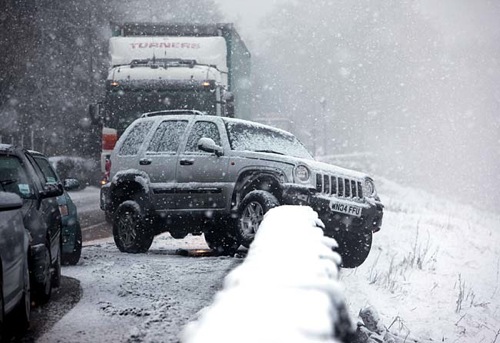Winter Driving: Best Practices and Safety Tips

Falling snow can be a beautiful, but it means dangerous conditions if you plan to head out on the road. Here are some tips and best practices that can help you stay safe and secure when driving in winter conditions.
Drive with your headlights on to improve visibility both ways
Avoid using cruise control – in adverse conditions, you want control
Be cautious on bridges, overpasses, etc. – they might be icy even if the roads are not
Avoid passing snow plows and sand trucks – drivers have limited visibility and the road in front may be unsafe
Know and practice how to drive in winter conditions – like braking on ice
Defensive & Evasive Driving Course
Properly warm-up your vehicle
Winter Tires – Do not wait to get them, they are amazing in winter conditions
Windshield Wipers – Ensure they are winter rated and serviceable
Know your car – every car is different: 4 wheel drive, traction control, stability control, etc.
Clean off the entire car – not only for your visibility but for the vehicles behind you
Executive Protection Training Program
Protective Fundamentals, Medical Response, Evasive Driving
Hotel, most meals and all materials are included
Ensure exhaust pipe is clear – a clogged tailpipe can lead to carbon monoxide poisoning
Keep your gas tank as close to full as possible – tank/lines may develop freeze points if not full
Make sure you have an appropriate winter emergency kit:
In addition to your typical vehicle emergency kit, here’s what you’ll need:
- Two or more blankets and extra clothing
- Snow shovel and scraper
- High calorie, non-perishable food/snacks.
- Bags of sand or even strips of carpet for added traction when stuck
- Extra windshield washer fluid and antifreeze
–
Preventative maintenance, checks and services (PMCS) – Get them done!:
Check the following: (Our students will remember T-FOLDE)
- Air pressure in the tires and tire condition/suitability (do you need winter tires?)
- Fuel system and lines for cracks, etc.
- Fluid levels (Antifreeze and proper grade oil)
- Battery, Lights and Ignition system
- Wiper blades and windshield washer fluid
- Defroster operational?
- Cooling system for fluid levels and no leaks
—
When driving in winter conditions, do everything slowly – your speed will compound the problem, speed limits are for dry roads.
Lastly, if you can avoid driving in bad conditions do so – just because you are safe and prepared, it does not mean the others on the road will be also. Inform someone of your travel plans if you do travel in poor conditions.
–
The three P’s of Safe Winter Driving
from NHTSA and OSHA:
PREPARE for the trip by maintaining your car and planning your route; PROTECT yourself by buckling up and having the necessary equipment; and PREVENT crashes on the road by driving safely and slowly.
–
